2009 HOFNER CT GALAXIE SOLID GUITAR
PHOTOS COURTESY OF OLAF POETER, GERMANY:
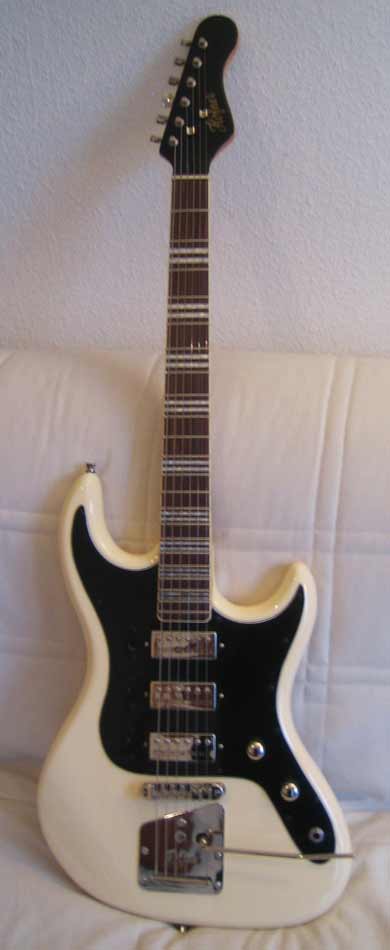
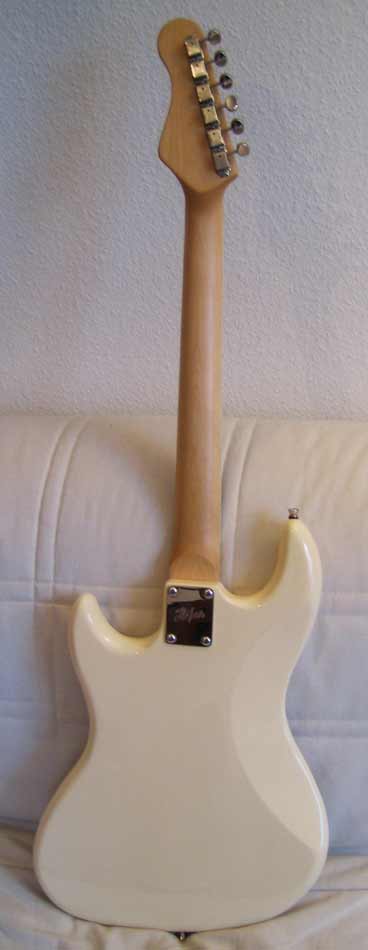
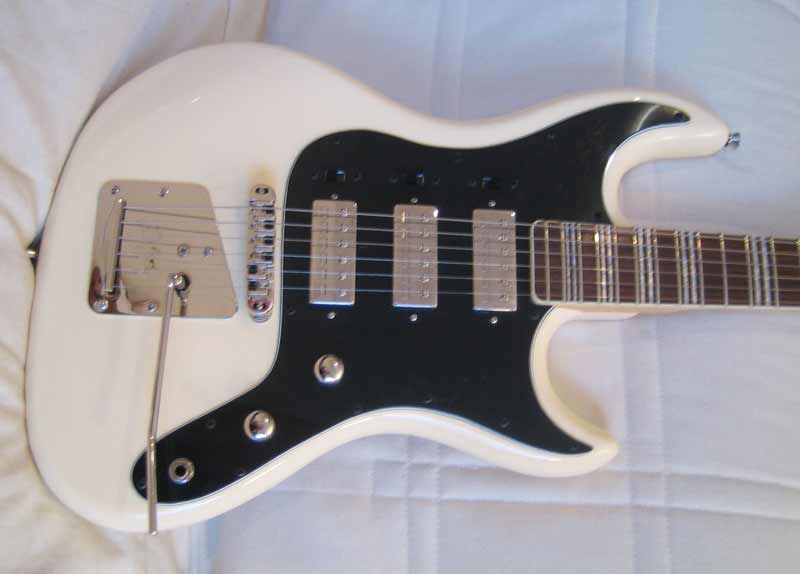
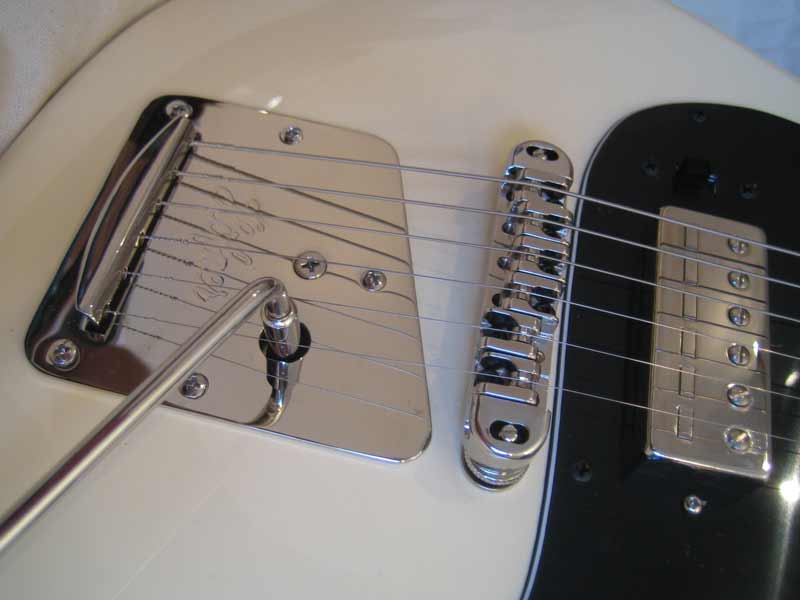
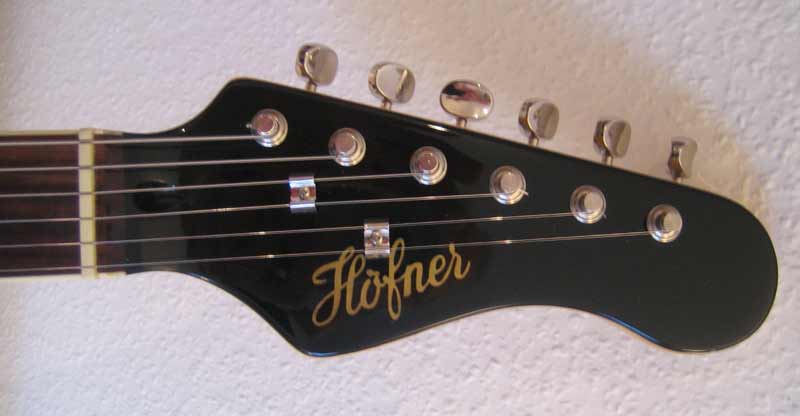
OLAF'S REVIEW OF HIS NEW GALAXIE:
Hofner Galaxie CT / 2009 Model
Private Test Report
Olaf Pöter / 05-Dec-09
First Impression:
The guitar came well packed from the dealer with 2 Allen keys for neck- and bridge adjustment.
This new Galaxie, in a nice cream white, is certainly not a copy of the 60's model, but you recognise it
immediately as a Galaxie; mainly, because of the fretboard inlays, which are simpler compared with the old ones, but very aesthetical. The body was downsized slightly, but still well rounded on the contour with a belly cavity on the back. The tuning machines are in Vintage design and lightweight - very nice! The pickguard is 3-ply (b/w/b). The fretboard is bound, much better finished than in the early days, with radii behind the last fret. The fret ends overlap the binding - a feature of much more expensive guitars! The hardware is nickel plated, which supports the impression of a valuable
instrument. The neck is slim, has a big fretboard radius of ca. 12" and is painted silk
matt, feeling very comfortably for the hand! The 3 mini-humbuckers with the staple magnets are longer and not as wide as the
originals Type 511 ones, so no compatibility with the Vintage Hofner models, which is a pity! The pickups can be selected in every possible combination, which is beneficial compared with similar guitars. The vibrato reminds me
of the one fitted to Jazzmasters, and the bridge really surprised me because it is massive, well adjustable, and rounded on the top for comfortable palm resting and
muting. Excellent!
Manufacturing Quality:
I shall start with the positive things: The body and neck painting has been
carried out well. No polishing marks or other paint defects. The string spacing at the nut is perfect -
a good job from the Chinese worker! The strings run perfectly centred over the fretboard and over the pups to the bridge, which is not
always the case, even on expensive guitars! The frets are well polished and rounded on the ends, so it is fun to change the fretboard registers while playing. This is what I call a great neck!
Not quite as perfect is the edge finish of the pickguard. The edges show some plastic flashes. I
removed them with fine sandpaper. The nut is made of plastic and it is flat on the top. So what - I did not expect a bone saddle in this price range.
The vibrato is either tight or loose. There are better solutions on the market. I put a piece of hard rubber into the thread hole which added some friction to the lever. But no problem for me - I don’t use vibratos anyway. The sound comes out of the fingers!
The string action at the nut is slightly too high for my taste, but still in the normal range. The action at the 12th fret is 2.2 mm which could also be less, but no real problem, because the Galaxie was strung with 08 - 38 string gauge, so it was playable quite well.
The octave intonation was incorrect, but every guitar owner uses a different string gauge, which re-quires a new intonation setting anyway.
Handling and Sound:
When I put the guitar on my knee, it felt familiar from the first moment. This is, because it is well balanced, not too heavy (ca. 3.3 kg) and one is sitting “in the guitar”. Not easy to explain, but it has to do with the belly shaping and the fact that the F-Chord is not far away. I have the same feeling with my old 4576! In other words - the Galaxie feels like a typical Hofner - well done! Also worthy
of mention is the pot knob positioning. If you rest your hand on the bridge, you can reach volume and even tone with your pinkie - good for the “violining” technique.
The factory installed strings do the job for the first test, but for me they are too thin. So I replaced them by Elixir Nanoweb Roundwounds with 09 - 42 gauge. Unusual for me (I play normally 10 - 46), but this guitar asks for that, don’t ask me why! I set the string action on 1.8 mm on E6 and 1.6 mm on E1 without any buzzing with medium pick attack. This is better than average, because many guitars allow not less than 2.0 / 1.8 mm. By the way, I did not have to touch the truss rod, it was perfectly adjusted.
After having set up the bridge to my personal settings, I started the first real sound test: First of all - the pup selector switches work the wrong way for me personally. I
was always trying to switch “on” to the right instead to the left! But this is a question of usage, only. The pup selection makes 7 different
positions available. To make a long story short - the 3 pickups in the single mode sound absolutely great, the combination of the neck/middle pup and middle/bridge pup are also useful, but for some reason the treble frequencies drop slightly. All 3 pups together sound a little boring, again missing some overtones. Having said that,
neck plus bridge pup sound pretty well. Interestingly, the middle pickup alone sounds really good, which is not necessarily usual on Strat type guitars, for example!
If I compare the sound of the Galaxie with Strats, even though these are equipped with single coils, I would describe it as follows: The Galaxie sounds warmer and mellower in a way, not missing rich overtones. And it does not lack some piano string attack, suited for Shadows tunes, for instance. The bridge pup sounds very enjoyable for rhythm stuff, not as thin and sharp like on the above mentioned guitars (thanks to the mini-humbuckers, sounding somewhere between full size ones and single coils).
Summary:
Hofner did an excellent job with the design and the manufacturing of the Galaxie CT. It reminds on the 60s version, regarding the typical handling and the sound, too. The neck was improved /
modernised considerably - less bulky and with a flat fingerboard radius for excessive
bends and with tasteful new inlays which make sure the New Galaxie is a Galaxy! The overall quality is, measured on the price level, by far better than I expected, especially regarding the neck and the sounds. Not only
Hofner friends will love the Galaxie. This guitar is simply fun. If you pick it up, you don’t put it down for hours! I cannot explain
why. It lies probably in the genes of the guitar.
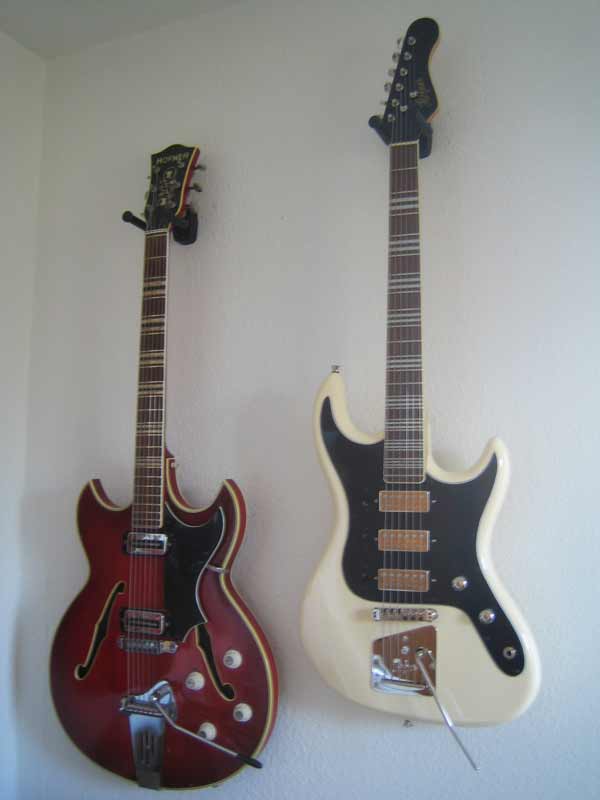
Return to VISITORS' GALLERY -
CT HOFNER MODELS










